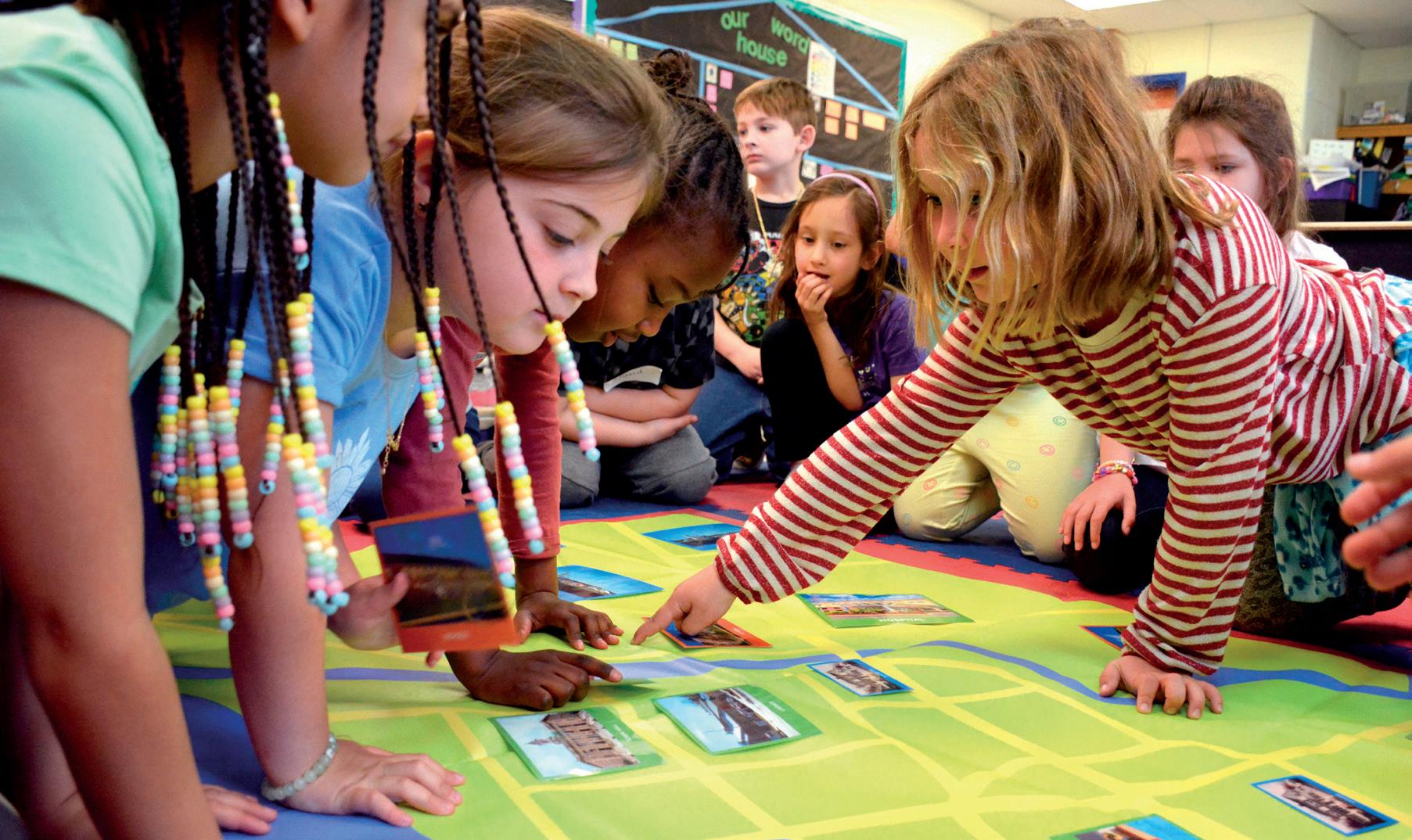

Civics Education for Connecticut Students
Museum Field Trips: $2 per student
FREE for Priority Districts and Title I Schools
Transportation Funds: Up to $350 per bus
Convenient In-School Programs
Made possible by a grant from the U.S. Department of Education
Civics Education for Connecticut Students
Where do we learn to be citizens?
At our local history museum!
We’re making it easy and affordable for elementary students to learn about their communities and their government.
Civics in the Museum
Five different institutions are proud to offer free and discounted programs for K-5 students that introduce civics, community, and government to young learners through engaging and accessible experiences.
As sites and keepers of history, these museums draw on our collective past to engage students with the past, present, and future. Our educators will help your students get excited about the potential and possibilities of civic life in the museum and in the classroom.
Programs Across Connecticut
Which museums are participating? Our partnership includes:
Connecticut Democracy Center at Connecticut’s Old State House, Hartford
Connecticut Museum of Culture and History, Hartford
Fairfield Museum and History Center, Fairfield
Mystic Seaport Museum, Mystic
The Mark Twain House & Museum, Hartford
CONNECTICUT’S OLD STATE HOUSE
Programs at a Glance
Civics Superheroes (Pg. 9)
Connecticut’s Kid Governor® My Voice, My Cause (Pg. 9)
Three Branches of Government (Pg. 10)
What Does a Governor Do? (Pg. 10)
Building Tour (Pg. 10)
History is All Around Us (Pg. 10)
What Makes a Community? (Pg. 13)
CONNECTICUT MUSEUM OF CULTURE AND HISTORY
FAIRFIELD MUSEUM AND HISTORY CENTER
The Three Branches of Government (Pg. 13)
The Legend of the Charter Oak (Pg. 13)
Me and My Community (Pg. 14)
The Three Branches of Government (Pg. 14)
Sharing Your Voice (Pg. 17)
What Do People Do All Day? (Pg. 17)
What Makes a Community? (Pg. 18)
Exploring Local History (Pg. 18)
THE MARK TWAIN HOUSE & MUSEUM
MYSTIC SEAPORT MUSEUM
Growing Up In The Gilded Age (Pg. 21) To Make A Meal (Pg. 21)
A Place For Every Thing (Pg. 22)
Your Proud Hometown History (Pg. 25)
The Letter of the Law (Pg. 25)
Stolen Sailors (Pg. 25)
The Legend of the Charter Oak (Pg. 26)
State and Connecticut Town Symbols (Pg. 26)
The Unlikely Candidate (Pg. 26)
About the Project
Civics Education for Connecticut Students is funded by a $1 million grant from the U.S. Department of Education, administered by the Connecticut Museum of Culture and History. The project is designed to enhance elementary civics education while promoting closer ties between history museums and schools. For more information, please contact Peter Moran, Project Director, at the Connecticut Museum of Culture and History, pmoran@connecticutmuseum.org
Scheduling a Program
All school groups must make a reservation in advance. Group size limits vary. Teachers interested in planning a field trip should contact the respective museum to learn more about specific program options and accessibility.
Grade Eligibility
All partner institutions offer programs for a variety of grades, but this project only funds civics programs for K-5 students. If you’re interested in a program on another subject or for older students, contact a partner museum directly to learn about other programming options.
Program Costs
◇ All programs are FREE for Priority School Districts and Title I Schools.
◇ Field trip programs are available for all other schools at $2 per student.
◇In-classroom programs are available for all other schools at $50 per program plus roundtrip mileage from the museum.
Bus Costs
Bus cost reimbursements are available for all schools and districts. Don’t forget to ask about it while scheduling your field trip!
◇Up to $350 per bus for Priority School Districts and Title I Schools.
◇Up to $100 per bus for all other schools.
◇After paying for your bus as usual, complete a quick and easy reimbursement process to receive your check to offset transportation costs.
Fee reductions and bus support are made possible by a $1 million grant from the U.S. Department of Education.
Connecticut’s Kid Governor
AConnecticutDemocracyCenterprogram in residence at Connecticut’s Old State House
Kid Governor® empowers 5th graders to change the world. This immersive, in-school civics education program teaches students about state government, voting, and civic participation through an authentic election for our state's Kid Governor. The elected
Kid Governor and their Cabinet serve a one-year term of active leadership and inspire their fellow 5th graders to take an active role in shaping their own communities. The program is free for all 5th grade classes and homeschool programs.
For more information about the Kid Governor® program, please visit CT.KidGovernor.org or contact Brian Cofrancesco, Director of Kid Governor®, brian.cofrancesco@ctdemocracycenter.org
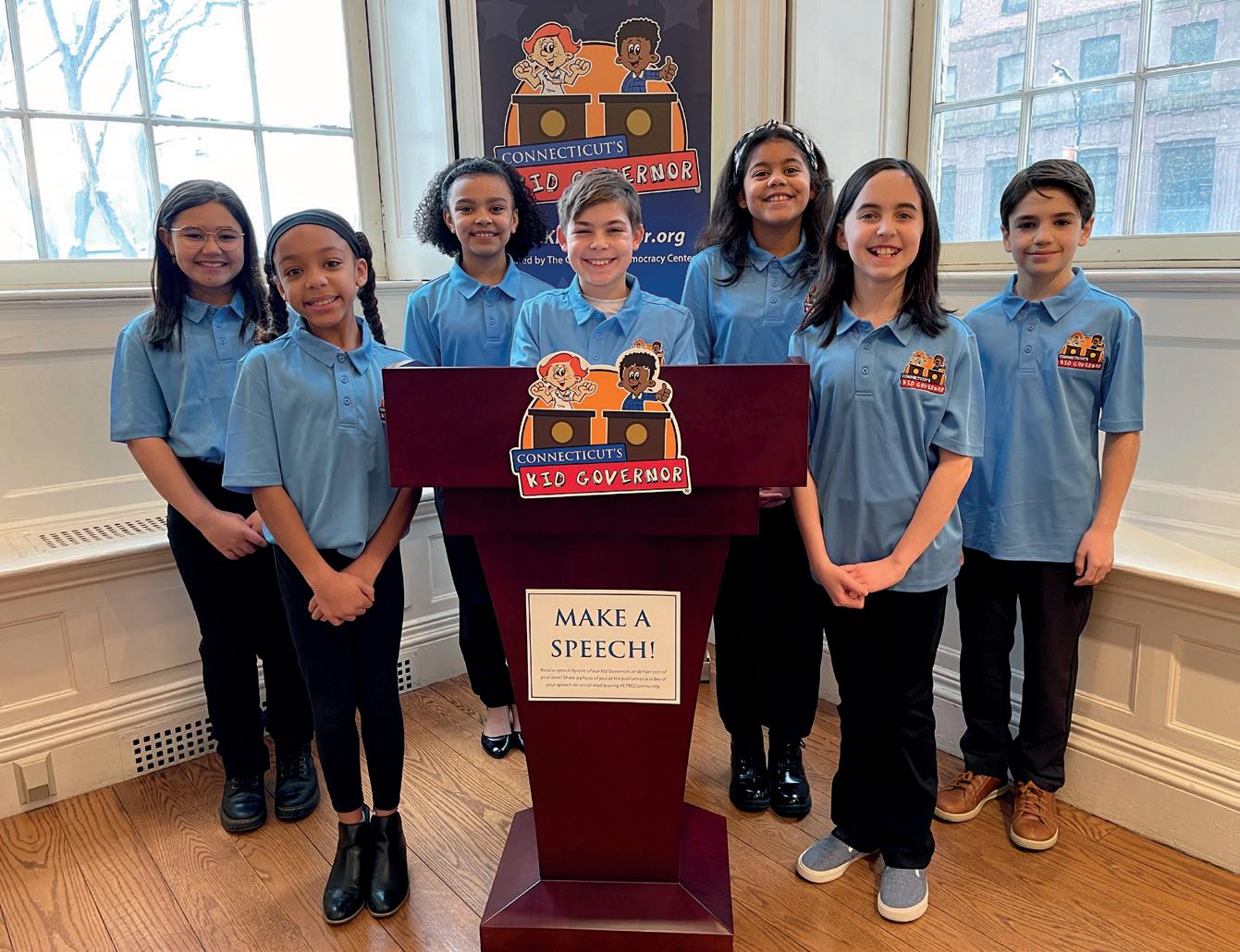
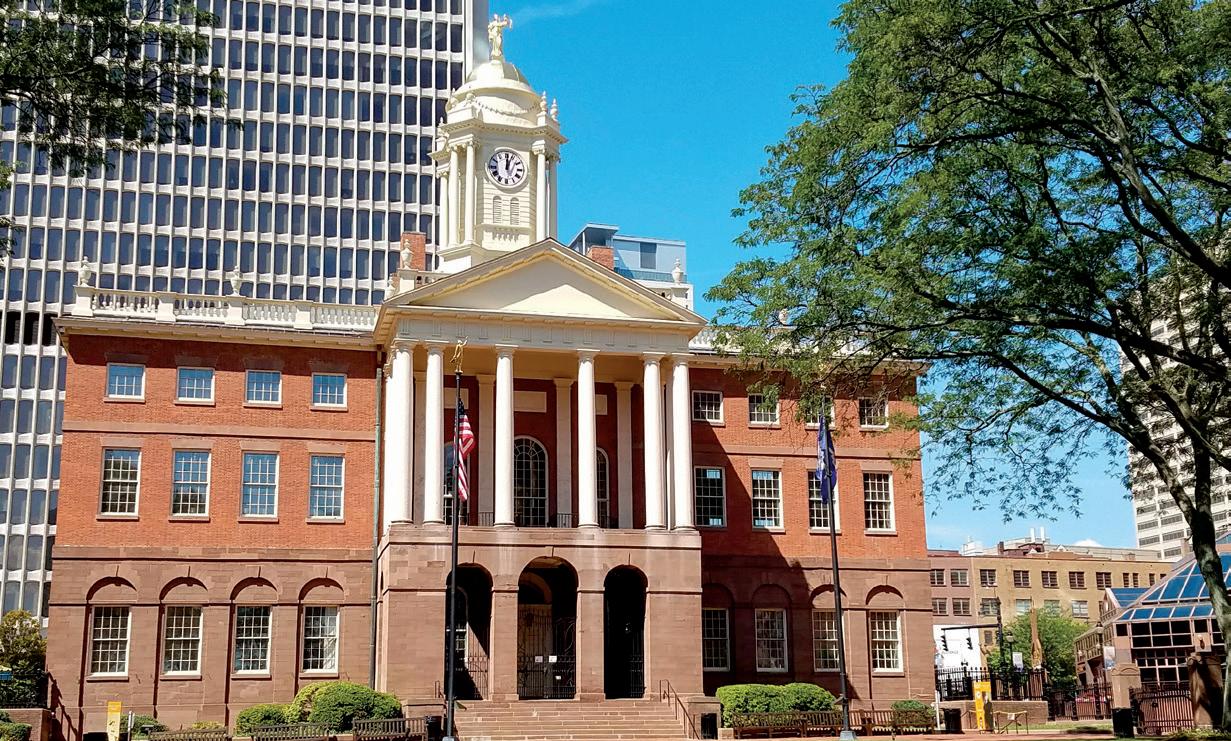
Old State House
Group Limit: Program dependent
Length: Up to 1 ½ hours
Cost: $2 per student, Free for Priority Districts and Title I Schools
Bus Support Available
To Schedule: ctoldstatehouse.org/ school-programs
To Contact: OSHschools@cga.ct.gov 860.240.5340
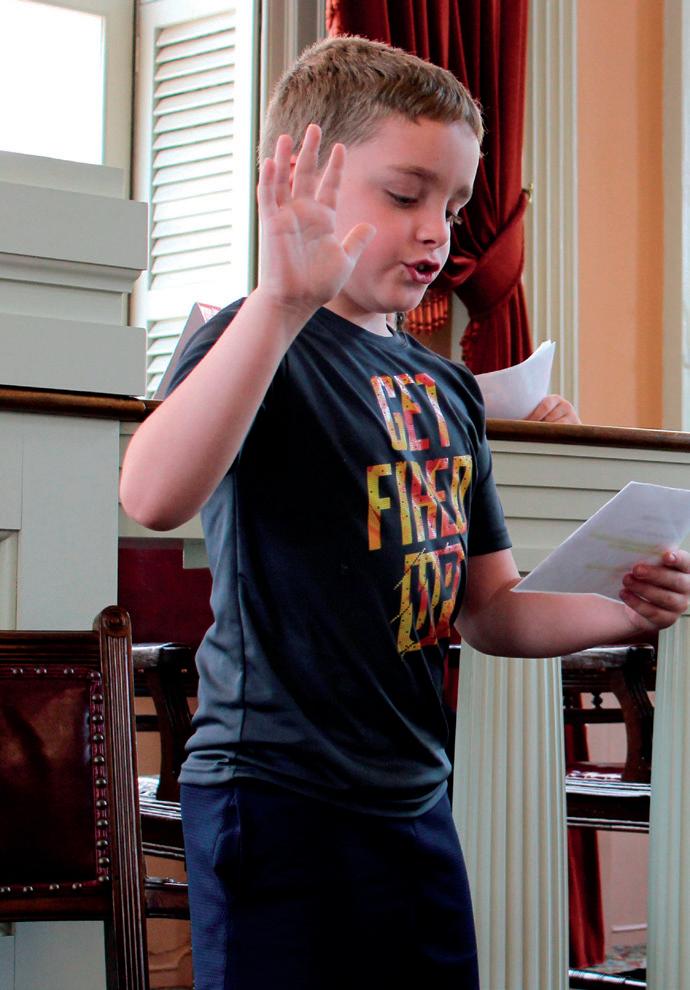
Connecticut’s Old State House
Located in downtown Hartford, Connecticut’s Old State House served as one of Connecticut’s state capitols from 1796 to 1878 and Hartford City Hall from 1878-1915. Beautifully restored and preserved, this museum and civic space was declared a National Historic Landmark in 1960 and now operates under a public/private partnership between the Connecticut General Assembly and the Connecticut Democracy Center.
GRADES K-3
Civics Superheroes
Students are never too young to learn civics! This program introduces simple community and civics concepts by encouraging early elementary students to ask what it means to be a hero and to think about heroes in their communities. Students will learn about real heroes throughout our state’s history as they explore Connecticut’s Old State House and discover all the ways people of all ages can be heroes for their communities!
GRADE K: INQ 1.a, 3.a, 4.f CIV 1.a - 3.a, 6.a HIS 2.a
GRADE 1: INQ 4.a, 4.f CIV 8.b, 12.a, 14.a
GRADE 2: INQ 4.a, 4.f CIV 1.a., 5.a - 6.b, 8.a, 10.a
GRADE 3: CIV 1.a - 2.a, 6.a, 12.a - 13.a
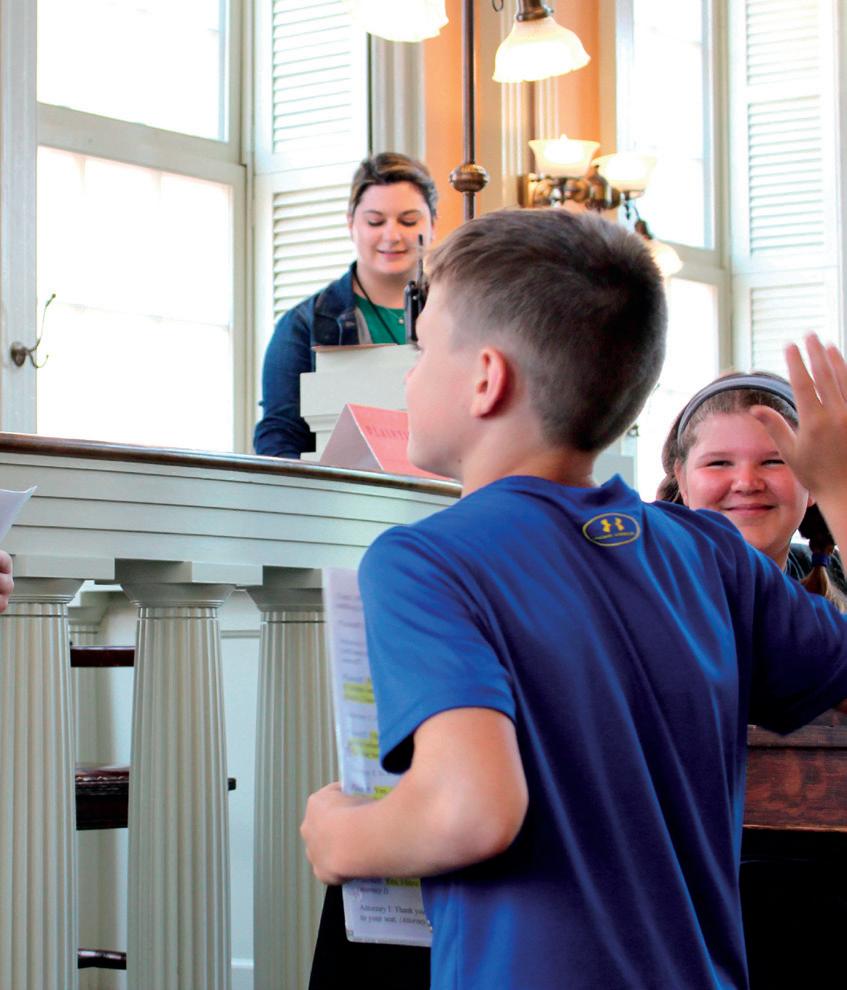
GRADES 2-5
Connecticut’s Kid Governor® My Voice, My Cause
Each fall, 5th graders are empowered to make a difference on a cause they care about as they vote in a real election for Connecticut’s Kid Governor. But how can students identify a cause that is meaningful to them? In this program, students will visit the Kid Governor’s Office in Connecticut's historic Old State House and explore the community issues that current and former Kid Governors and Cabinet Members have addressed. Students will discuss ways they can make a difference on causes that matter to them and will even make a Kid Governor’s sash to take home! Prior participation in Connecticut’s Kid Governor® is not required.
GRADE 2: INQ 4.a - 4.e CIV 6.a, 8.a, 10.a HIS 3.a
GRADE 3: INQ 4.b - 4.f CIV 2.a, 6.a
GRADE 4: INQ 4.b - 4.f
GRADE 5: INQ 4.b - 4.f CIV 10.b
GRADES 3-5
Three Branches of Government
Step inside this former Connecticut state capitol and take on the roles of Governor, Legislators, Judge, and Jury in the historic Courtroom, House, and Senate Chambers! This program immerses students in the functions of our state government through roleplay and hands-on activities that demonstrate how each branch works and how we can take an active part in our democracy. Ask about adding afree tourofConnecticut's State CapitoltoyourThree Branches program!
GRADE 3: INQ 2.a CIV 1.a - 2.a, 4.b, 6.a, 12.a - 13.a
GRADE 4: INQ 4.f
GRADE 5: CIV 3.a
GRADES 3-5
What Does a Governor Do?
Being Connecticut’s governor is a big job, but what exactly does that job entail? This participatory program explores some of the governor’s Constitutional duties and responsibilities – from working with the legislative and judicial branches to signing and vetoing laws, nominating officials, creating a state budget, and more. Students will visit the Kid Governor’s Office and take on roles to learn what it takes to run the State of Connecticut. Prior participation in Connecticut’s Kid Governor® is not required.
GRADE 3: INQ 4.b - 4.f CIV 1.a - 2.a, 4.b - 6.a, 12.a - 13.a ECO 12.a
GRADE 4: INQ 4.b - 4.f CIV 6.a, 12.a
GRADE 5: INQ 4.b - 4.f CIV 10.b
GRADES 3-5
Building Tour
What could be better than learning about Connecticut civics and history in the rooms where they happened? Students will learn about the Amistad in the Courtroom where the 1839 Amistad trials took place, visit the House Chamber where Connecticut passed an 1833 law to close Prudence Crandall's school for young Black women, and explore a 1797 Museum of Curiosities. Their exploration of this building's 228-year history will reveal Connecticut stories that shaped our state and nation.
GRADE 3: INQ 1.a, 3.a CIV 1.a - 2.a, 4.b - 6.b, 12.a - 13.a HIS 2.b, 3.a
GRADE 4: CIV 6.a, 12.a
GRADE 5: INQ 4.e CIV 3.a - 4.a, 8.a, 10.b HIS 5.a, 9.a, 14.b, 14.d
GRADES K-5
History is All Around Us
This interactive, multimedia exhibit is about the greater Hartford area and the history that we see all around us. Explore history in the places we live, the everyday objects we use, the things we say, and the actions we can take!
GRADE K: CIV 3.a GEO 1.a - 2.a ECO 4.a, 6.a HIS 2.a, 9.a
GRADE 1: CIV 12.a GEO 7.b, 11.a ECO 4.a, 15.a HIS 9.a
GRADE 2: CIV 5.a - 6.b, 8.a HIS 1.a, 3.a - 4.a, 11.a GEO 1.a - 2.a, 4.a ECO 13.a
GRADE 3: CIV 2.a GEO 2.a, 4.a HIS 1.a
GRADE 4: CIV 12.a, 14.a GEO 5.a - 5.b HIS 9.a
GRADE 5: CIV 8.a, 10.b, 14.a HIS 9.a, 14.a - 14.b
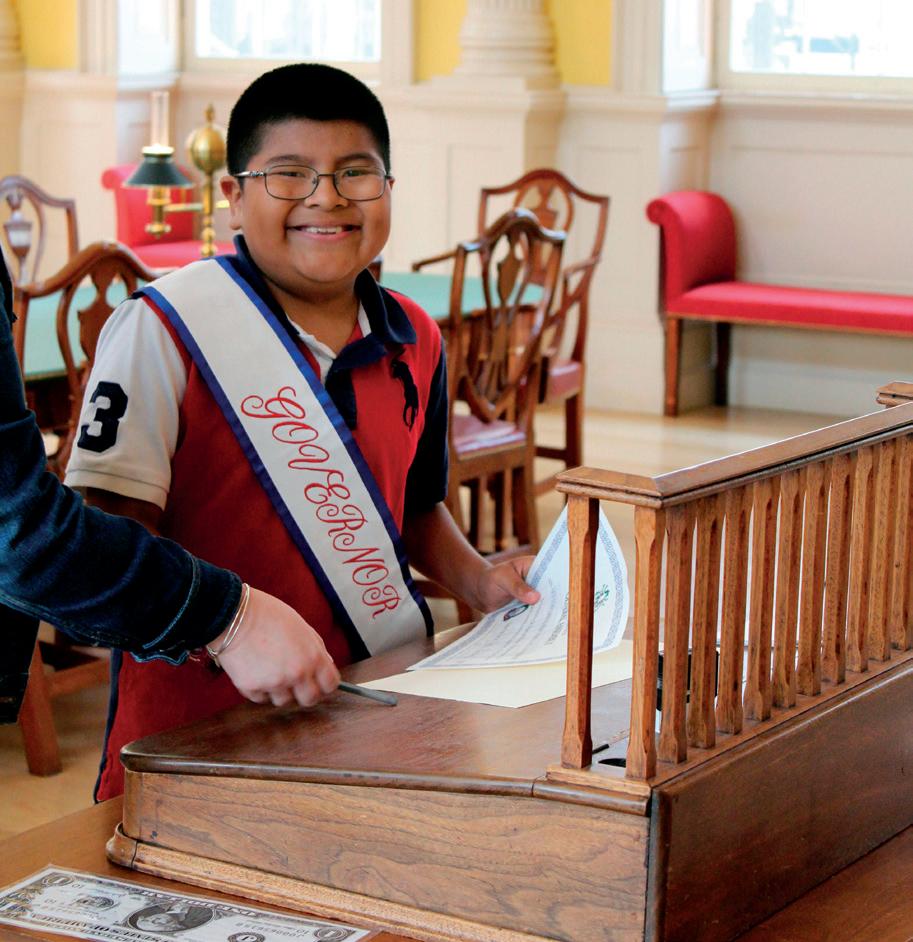
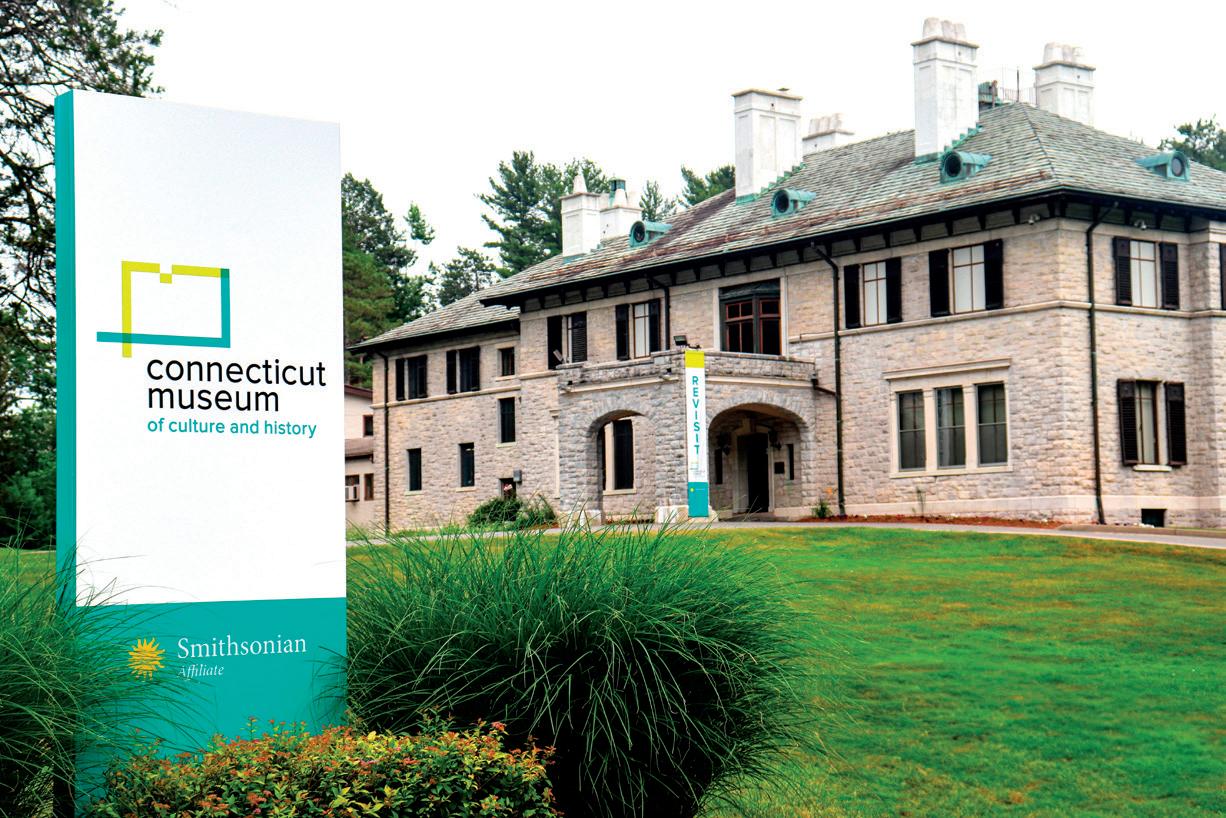
Group Limit: Program dependent
Length: 1 ½ hours
Cost: $2 per student, Free for Priority Districts and Title I Schools
Bus Support Available
Group Limit: Class Group Size Length: 1 ¼ hours
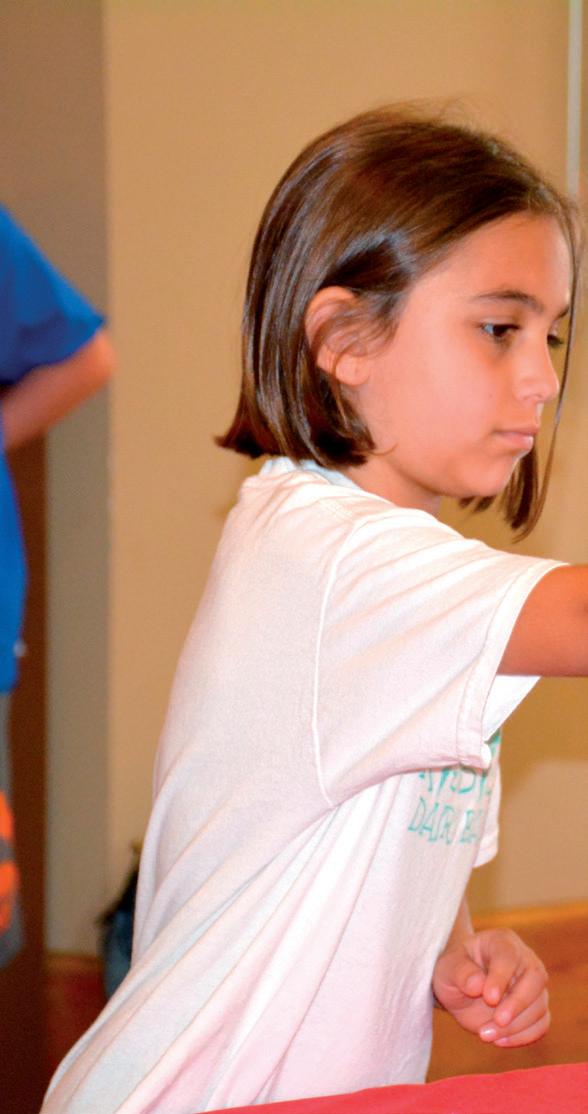
Connecticut Museum of Culture and History
The Connecticut Museum of Culture and History is a private, non-profit organization located in the West End of Hartford. As a 200-year-old museum, we are committed to connecting Connecticut residents to each other and the history and culture of our state. The Museum offers hands-on engaging programs that highlight objects from our vast collection to bring history and civics to life for students.
Museum Programs:
GRADES 1-2
What Makes a Community?
Students use a large floor map and “building” blocks to strengthen map skills and vocabulary while creating and analyzing a new town, then explore how community life differed in the past in our exhibit space. The third part of the program focuses on how decisions are made in communities, as well as ways that children can be good citizens and contribute to their communities.
GRADE 1: HIS 9.a ECO 4.a CIV 14.a GEO 5.a, 7.a, 8.a, 9.a
GRADE 2: HIS 4.a ECO 7.a, 12.a, 13.a CIV 5.a, 6.a, 6.b, 8.a, 10.a GEO 1.a, 2.a
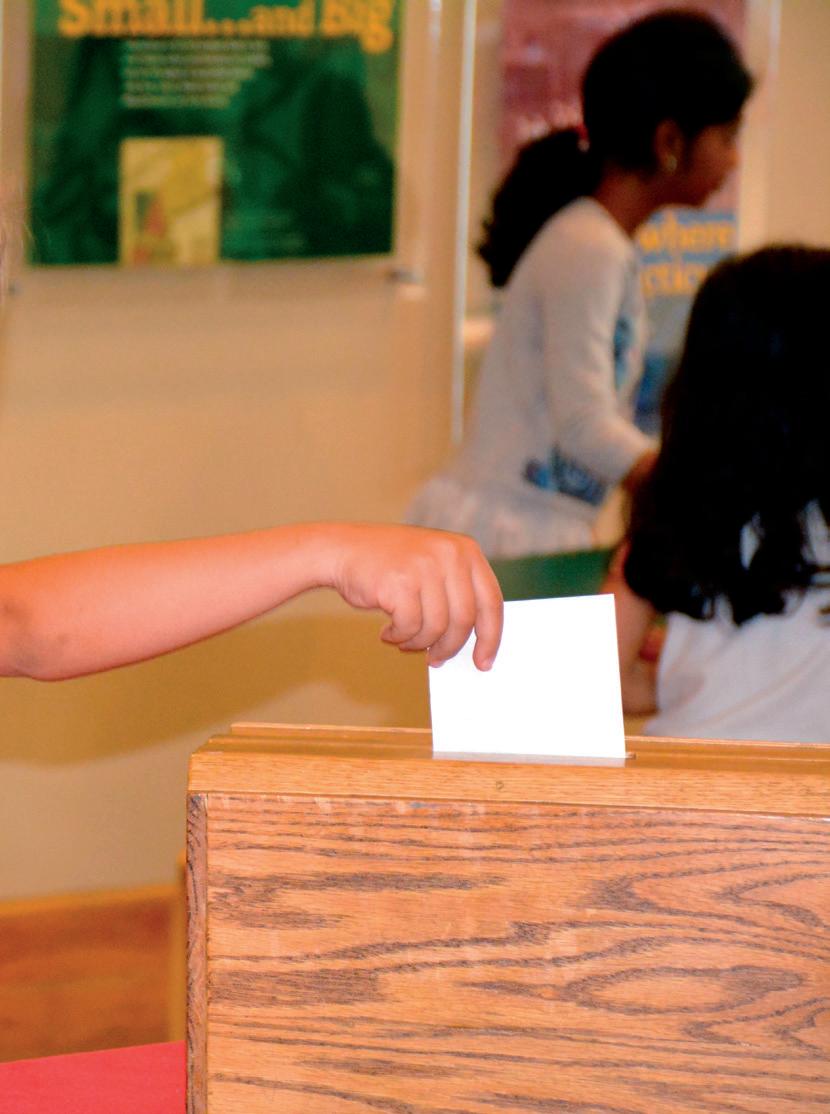
GRADES 3-5
The Three Branches of Government
Students explore Connecticut’s executive, legislative, and judicial branches of government to discover who makes the rules in Connecticut. To better understand the role of each branch, students elect a governor from their class, debate a bill, and hold a mock trial (student reading required). Through role-playing and active participation, students learn the purpose of rules and laws, explore the separation of powers, and discover the rights and responsibilities of individuals.
GRADE 3: CIV 1.a, 2.a, 4.b, 6.a, 12.a, 13.a
GRADE 4: CIV 6.a, 12.a
GRADE 5: CIV 3.a, 10.b, 14.a
PLEASE NOTE: This program does not include an exhibition component. For $2/student, explore the Museum with a gallery visit add-on!
GRADES 3-5
The Legend of the Charter Oak
Why is the white oak a symbol of Connecticut’s strength and independence? During this program, students bring the people and events from the legend of the Charter Oak to life using a variety of dramatic techniques, period costumes, and specially-designed props. Students evaluate primary sources, including historic maps, to draw their own conclusions about the famous legend.
GRADE 3: HIS 2.b, 10.a CIV 6.b GEO 3.a
GRADE 4: HIS 9.a
GRADE 5: HIS 9.a, 16.a CIV 4.a, 8.a
PLEASE NOTE: This program does not include an exhibition component. For $2/student, explore the Museum with a gallery visit add-on!
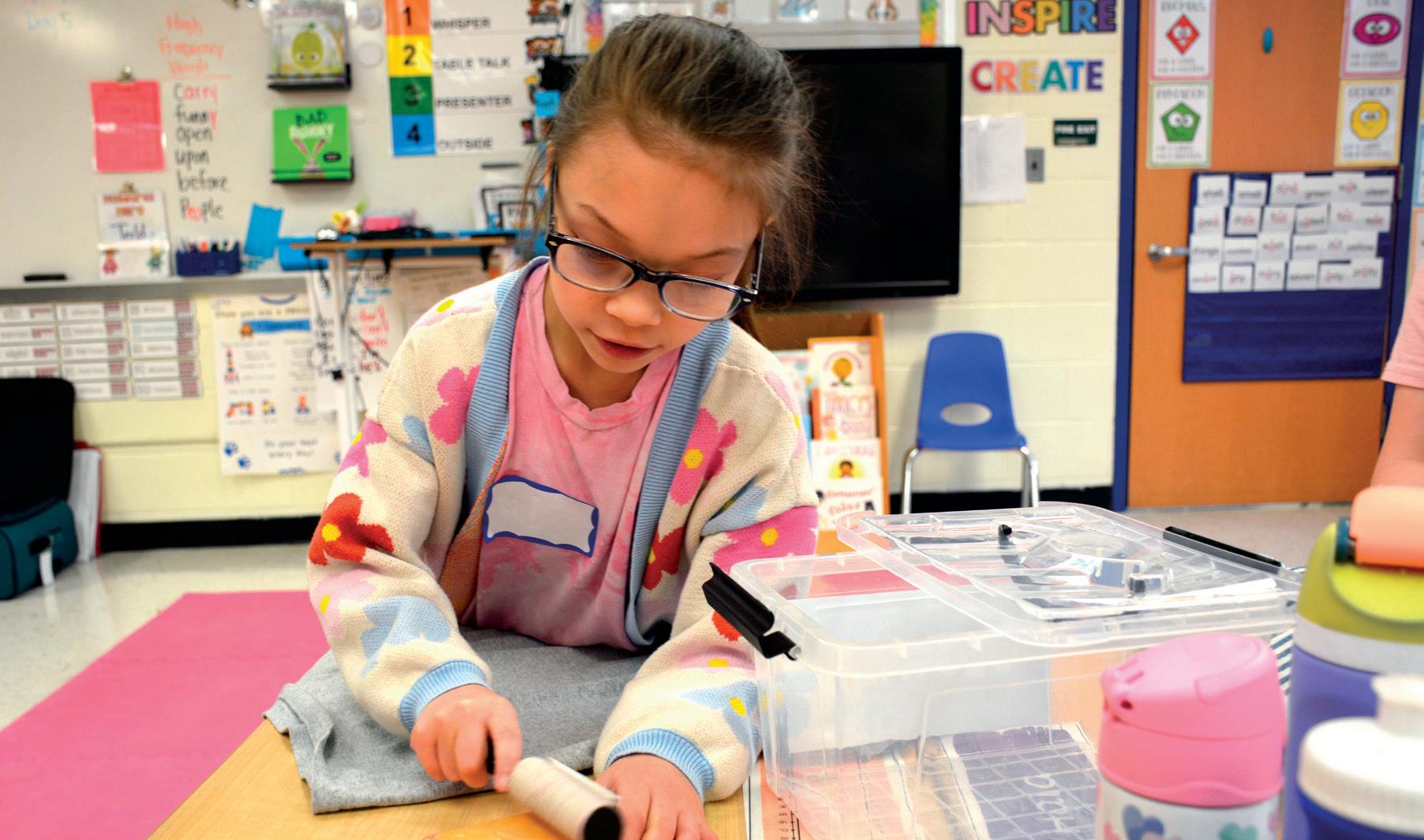
Classroom Programs:
GRADES K-2
Me and My Community
What are my different communities and what is my role in them? This interactive program explores the roles and responsibilities in family, school, and town communities. Students will try out different jobs done in these communities today and long ago with contemporary and reproduction historical objects. Students will then determine what a community needs by designing their own town on a floor map.
GRADE K: HIS 2.a, 9.a, 10.a, 12.a ECO 3.a, 4.a, 6.a CIV 1.a, 2.a, 3.a, 6.a GEO 1.a, 2.a
GRADE 1: HIS 9.a ECO 4.a CIV 12.a, 14.a GEO 5.a, 8.a, 9.a
GRADE 2: HIS 4.a ECO 7.a, 12.a, 13.a CIV 1.a, 5.a, 6.a, 6.b, 8.a GEO 1.a, 2.a
GRADES 3 - 5
The Three Branches of Government Students explore Connecticut’s executive, legislative, and judicial branches of government to discover who makes the rules in Connecticut. To better understand the role of each branch, students elect a governor from their class, debate a bill, and hold a mock trial (student reading required). Through role-playing and active participation, students learn the purpose of rules and laws, explore the separation of powers, and discover the rights and responsibilities of individuals.
GRADE 3: CIV 1.a, 2.a, 4.b, 6.a, 12.a, 13.a
GRADE 4: CIV 6.a, 12.a
GRADE 5: CIV 3.a, 10.b, 14.a
PLEASE NOTE: This program is also available for groups of up to 50 students. However, a large, open space is required as this program will not work in a standard classroom at this scale.
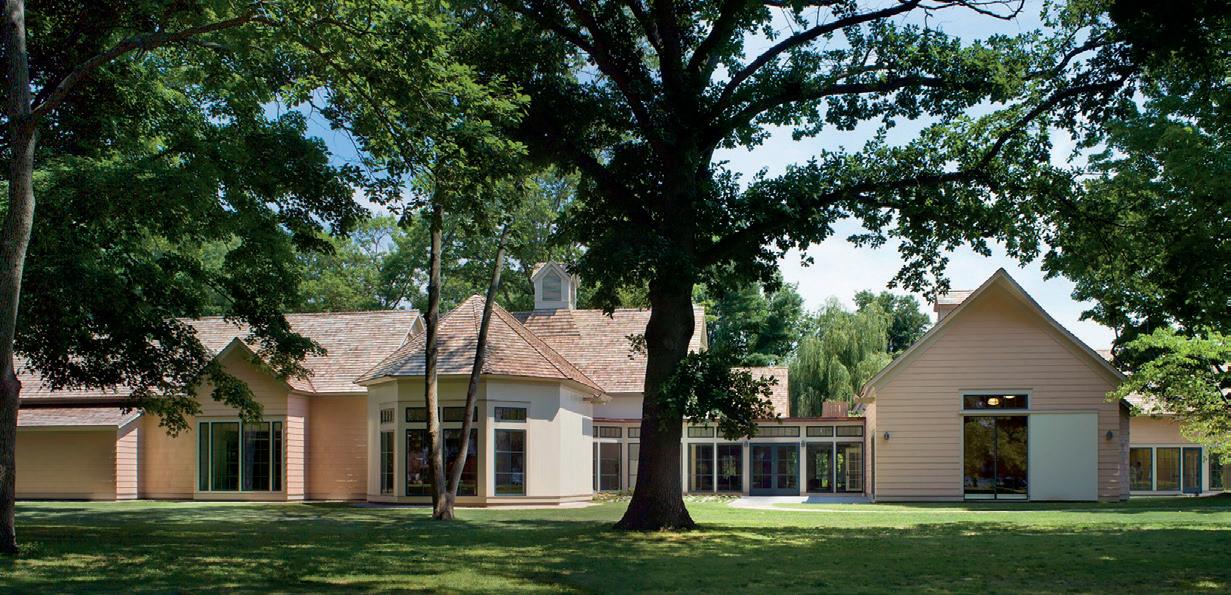
Group

Fairfield Museum and History Center
The Fairfield Museum is delighted to welcome teachers and students to experience our award-winning education programs—from exploring historic sites to hands-on learning in the galleries. We believe that cultivating a deep appreciation of history is essential to building civic engagement. By bringing together diverse perspectives and experiences, we can encourage students to consider their own roles and agency within their communities.
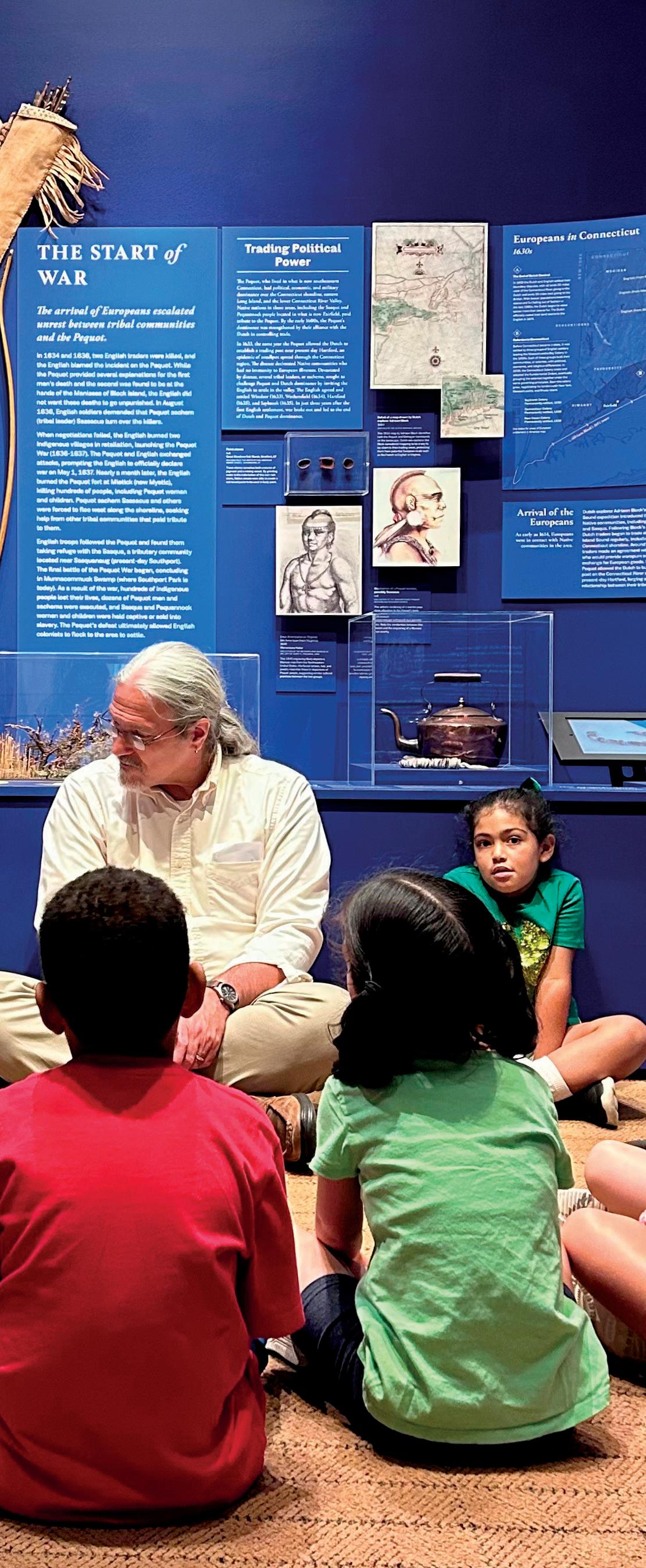
GRADES K-3
Sharing Your Voice
We can share our voices in our communities in different ways. One important way to make our voices heard is voting. When we vote, we can learn to listen to different opinions, discover what causes matter to us, and decide what kind of leaders we want. Students will complete a scavenger hunt to meet the candidates running in an election, design campaign posters, and cast a vote!
GRADE K: INQ 1.a, 4.f CIV 1.a, 2.a 6.a ECO 3.a
GRADE 1: INQ 1.a, 3.a, 4.a, 4.c, 4.f, CIV 14.a
GRADE 2: INQ 1.a, 3.a, 4.a, 4.c, 4.f CIV 1.a, 5.a, 8.a, 10.a, 14.a ECO 12.a 13.a
GRADE 3: INQ 4.c - d CIV 1.a, 2.a, 6.a, 12.a, 13.a
GRADES K-2
What Do People Do All Day?
Illustrator Richard Scarry developed his books to be educational and fun for children. Scarry’s beloved Busytown was created while he lived in Westport and teaches children about how communities work: what people do, the transportation they use, and the places they go. The program invites students to draw connections between their personal experiences in their community and Scarry’s fictional Busytown. Students will use paper to design buildings and spaces that they’d like to see in their own communities.
GRADE K: INQ 1.a CIV 1.a, 2.a, 6.a ECO 3.a, 4.a HIS 2.a
GRADE 1: INQ 4.a CIV 12.a ECO 4.a
GRADE 2: INQ 1.a, 4.a, 4.f CIV 5.a, 6.a, 14.a HIS 4.a
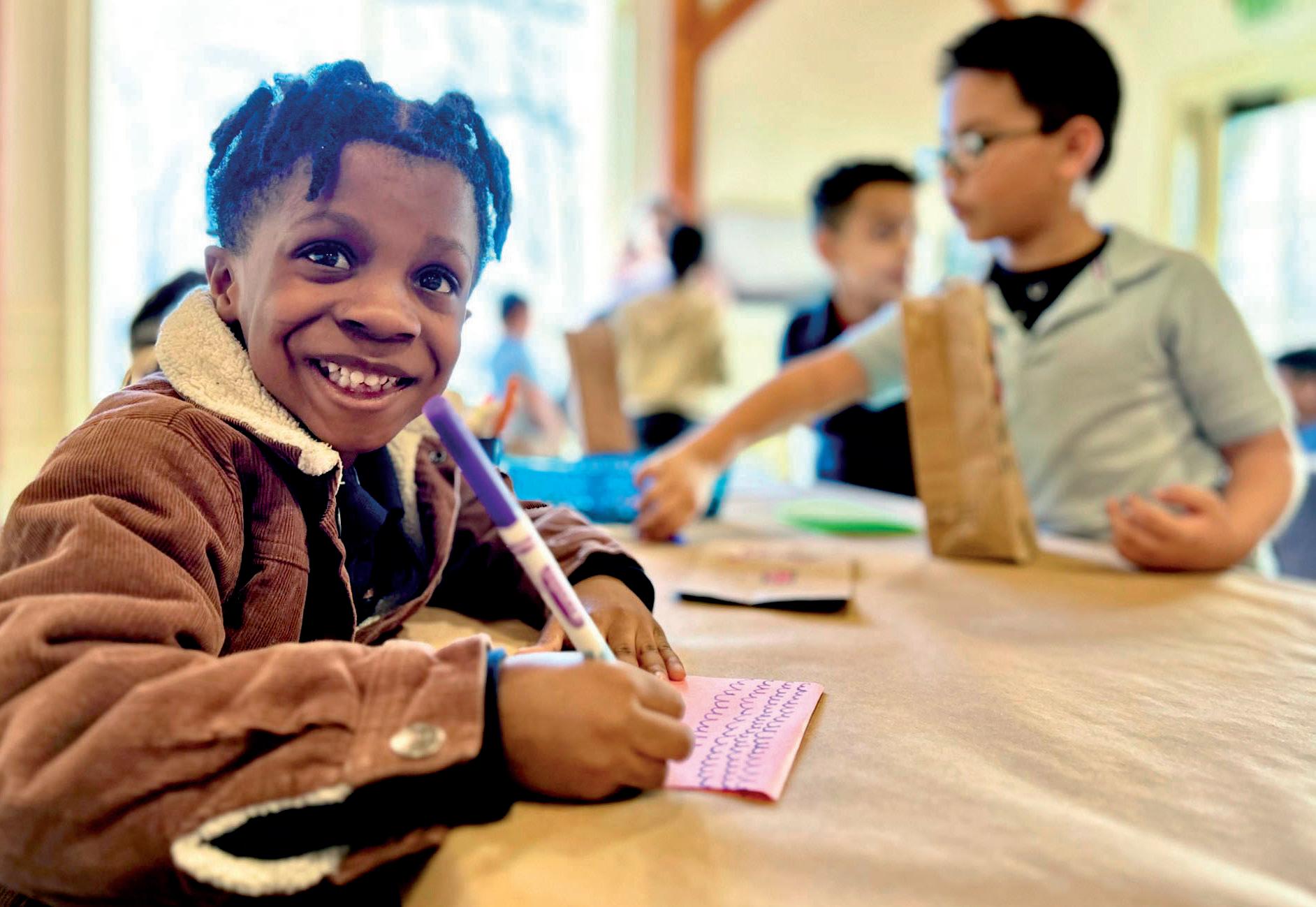
GRADES 2-3
What Makes a Community?
By considering connections between the land, the built environment, and the different people who have lived in what we now know as Fairfield, students will explore how people found ways to build community throughout history. This walking tour highlights three historic sites on the Museum’s campus: the Sun Tavern, which functioned as an important gathering space in the 1700s; the Old Academy, one of the town’s oldest surviving school buildings; and the Old Burying Ground, the oldest cemetery in Fairfield.
GRADE 2: INQ 1.c, 3.a, 4.a, 4.c CIV 6.a, 14.a
HIS 4.a GEO 2.a
GRADE 3: CIV 1.a, 2.a, 6.a - b HIS 2.b, 10.a, 11.a
GRADE 3-5
Exploring Local History
How might we begin exploring the stories of people and events from the past? Students will build their observation and critical thinking skills by handling and studying reproduction artifacts up close. Students will also study maps to explore how the area’s landscape has changed over time, serving different purposes for different communities. In particular, students will learn about the culture of the Native Americans who lived in the area and then create their own corn husk dolls to take home.
GRADE 3: INQ 3.a, 3.c, 4.b CIV 2.a, 6.a GEO 2.a - 4.a, 4.b, 6.a, 8.a HIS 2.a, 2.b, 10.a ECO 3.a
GRADE 4: INQ 3.a, 4.a - b, 4.e GEO 2.a, 2.b, 3.a, 5.a - b, 7.a, 8.a CIV 12.a, 14.a
GRADE 5: INQ 3.a, 4.a, 4.d GEO 2.a CIV 4.a, 10.b, 14.a HIS 4.a, 6.a, 10.a, 16.a - c
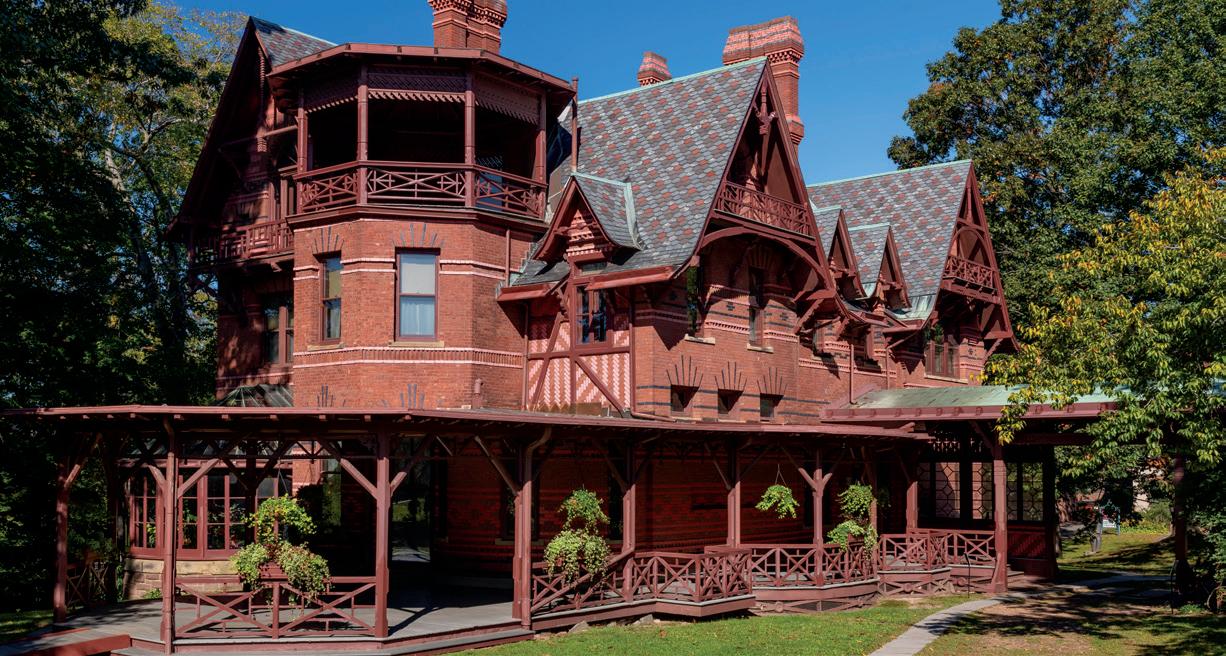
Group Limit: 70 people, including teachers and chaperones
Length: 1 ½ - 2 ½ hours, depending on group size and additional components
Cost: $2 per student, Free for Priority Districts and Title I Schools Bus Support Available
Note:
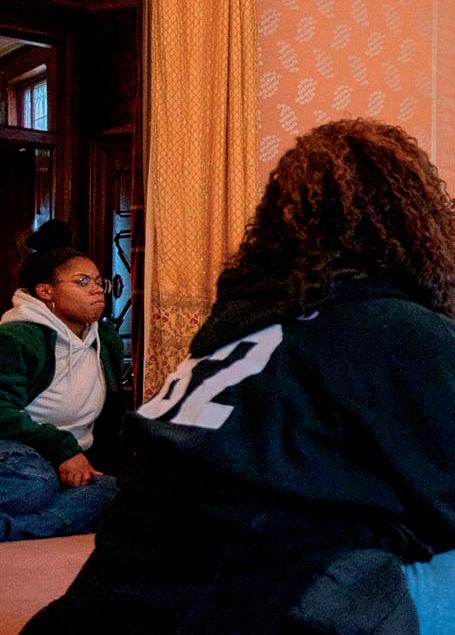
Photo: John Groo
The Mark Twain House & Museum
Samuel Clemens - better known by his pen name, Mark Twain - changed the way the world sees America and the way Americans see themselves. The Museum carries on his legacy by preserving Twain’s historic house and interpreting his home and life for people of all ages around the world. Our programs foster literacy, critical thinking, humanity, and social justice, exploring important issues of the day as Twain did. All programs include a tour of the Mark Twain House.
GRADES K-3
Growing Up In The Gilded Age
What was it like to learn, play, and grow up in Mark Twain’s home?
In this special 60-minute interactive tour, young students explore the everyday lives of the Clemens daughters—the books, games, and songs they loved, the subjects they studied, and the people they interacted with. Led by an experienced guide, this inquiry-based tour invites students to think about a house as a source for understanding the past, and to think about the ways that childhood and family life in the Gilded Age were similar and different to their own.
GRADE K: HIS 2.a, 9.a, 10.a, 12.a CIV 1.a - 3.a, 6.a
ECO 3.a, 4.a, 6.a GEO 2.a
GRADE 1: HIS 3.a, 9.a CIV 12.a, 14.a, GEO 4.a, 6.a, 7.b, 8.a, 10.a
GRADE 2: HIS 1.a, 4.a, 6.a, 9.a CIV 6.a, 6.b, 14.a GEO 2.a, 4.a
GRADE 3: HIS 1.a - 3.a CIV 6.a, 6.b, 12.a GEO 4.a, 6.a
GRADES K-5
To Make A Meal
What impacts the food we grow and eat?
How did the Clemens family and their domestic staff decide what to purchase, prepare, and eat each day? Using the family’s grocery lists and favorite recipes, students explore how people in 19th century Connecticut made choices about the food they ate and about the competing needs of agriculture, industry, and natural resources. The program encourages students to think about how culture, climate, geography, transportation, and taste all affect family and community choices around food.
GRADE K: HIS 2.a, 9.a, 10.a, 12.a CIV 1.a - 3.a, 6.a ECO 3.a, 4.a, 6.a GEO 2.a
GRADE 1: HIS 9.a CIV 12.a, 14.a ECO 4.a, 14.a, 15.a - b GEO 2.a - b, 3.b - c, 4.a - 9.a, 10.a - 12.a
GRADE 2: HIS 9.a, 11.a, 12.a CIV 6.a - b, 8.a, 14.a ECO 1.a, 7.a GEO 4.a
GRADE 3: HIS 2.b CIV 6.a ECO 3.a GEO 2.a - 4.a, 6.a, 8.a
GRADE 4: CIV 12.a, 14.a ECO 7.a GEO 2.a, 5.a - b, 7.a, 8.a, 11.a, 12.a - b
GRADE 5: CIV 10.b GEO.4.a, 8.a
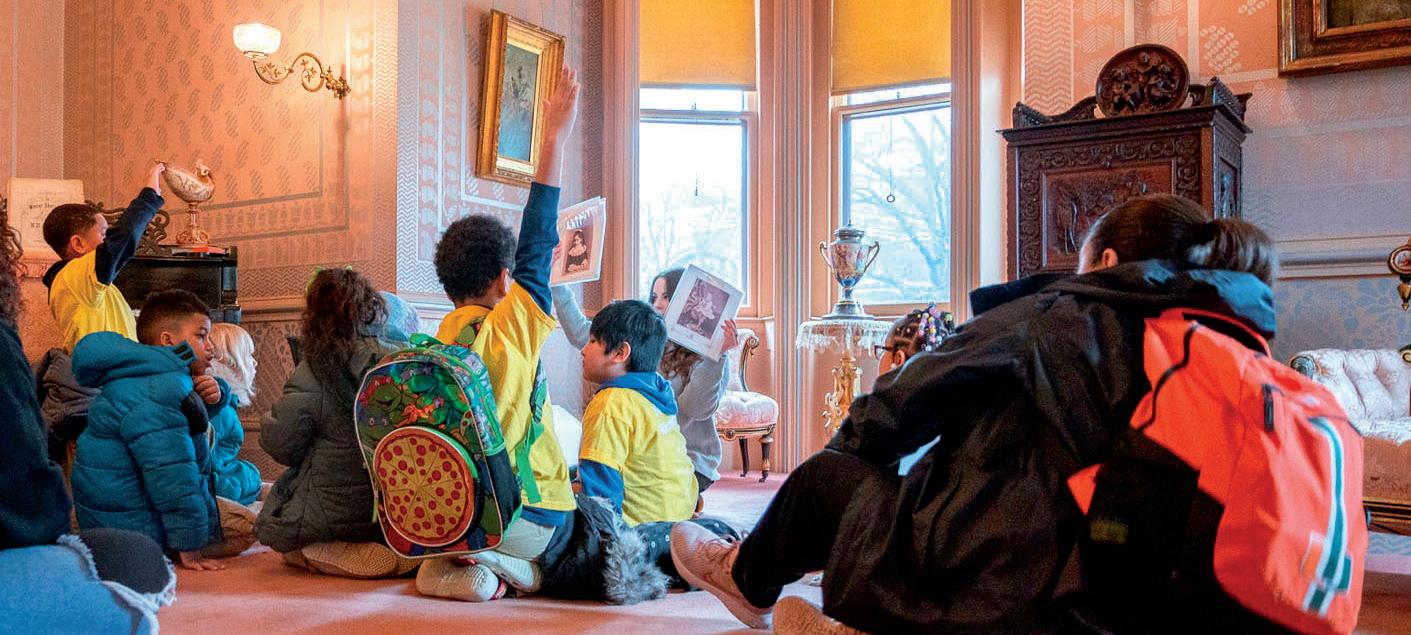
GRADES 3-5
A Place For Every Thing
What was it like to visit, work at, and live in Mark Twain’s house?
Between Sam and Livy Clemens, their three daughters, their staff, and a steady stream of visitors from down the street and across the country, Mark Twain’s house was usually full of people. In this hands-on program and tour, students learn about what it was like to live and work in Gilded Age Hartford through the objects people used each day. It encourages them to think about the various roles people play in their homes and communities, helping them draw connections between their lives and the lives of Hartford residents more than 100 years ago.
GRADE 3: HIS 1.a - 3.a, 9.a - 11.a CIV 6.a - b, 12.a GEO 4.a, 6.a
GRADE 4: CIV 6.a, 12.a, 14.a GEO 5.a, 7.a, 8.a
GRADE 5: CIV 4.b, 6.a, 10.b ECO 4.a
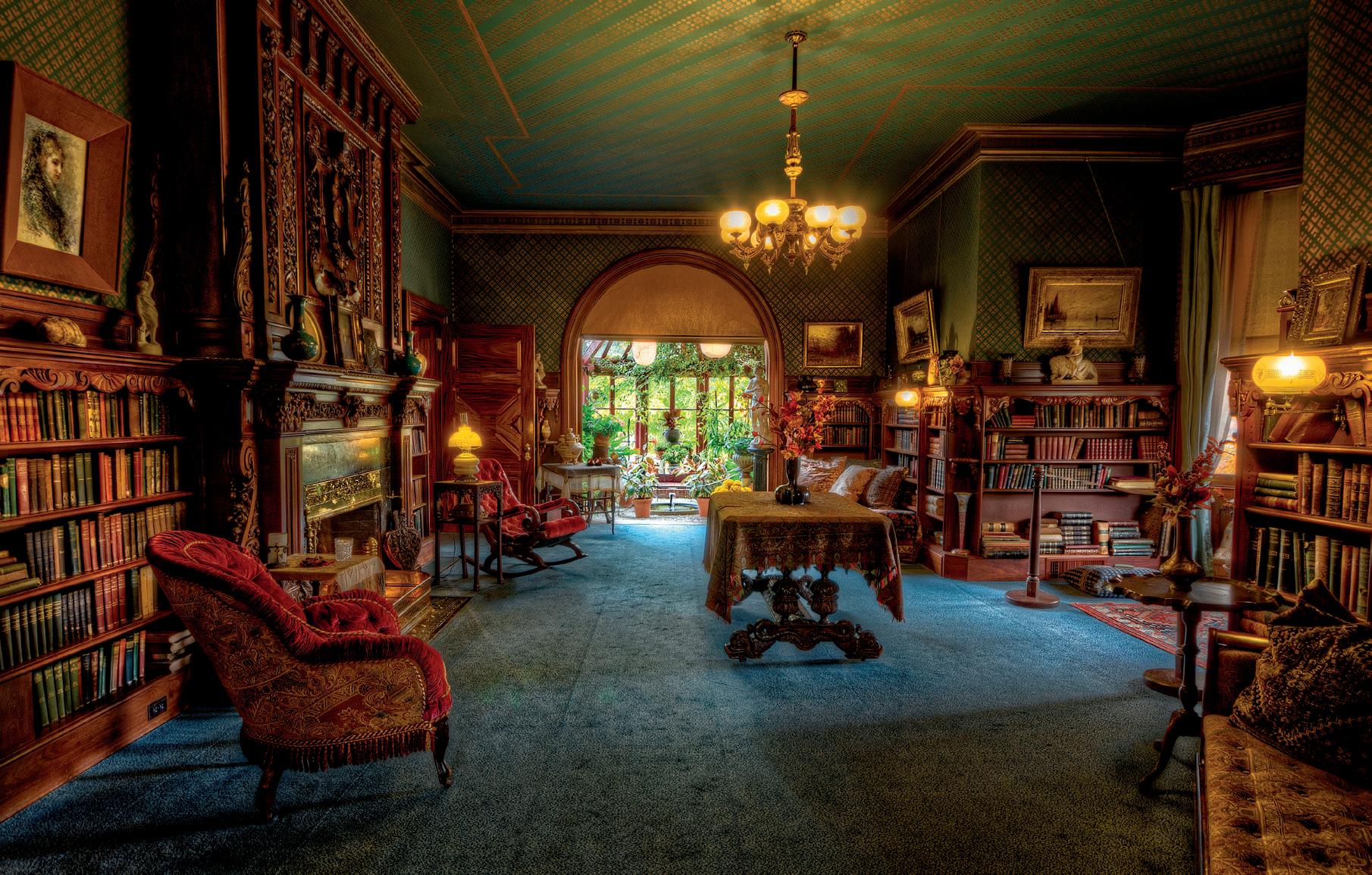
Photo: Frank Grace
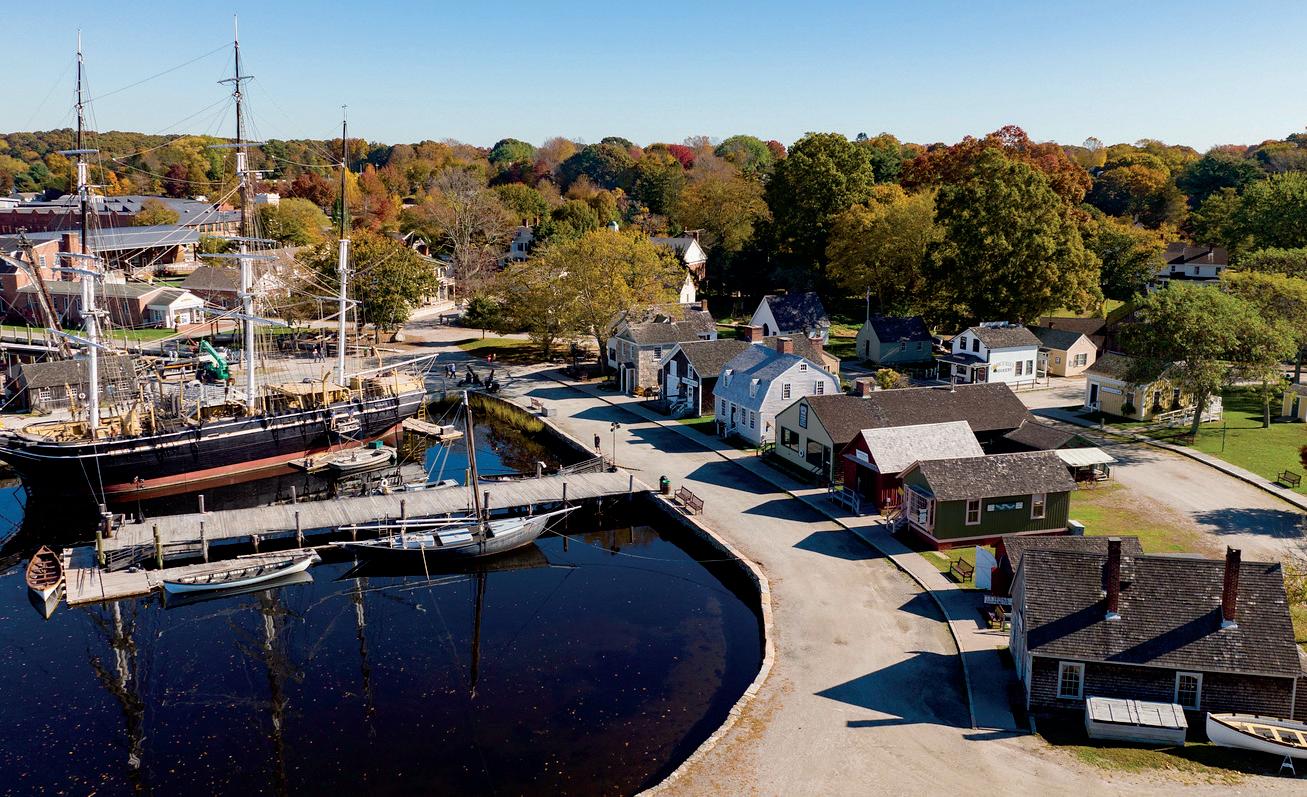
Mystic Seaport Museum
Mystic Seaport Museum is one of the largest maritime museums in the world and a leading center for maritime research and experiential education. Our campus includes a recreated coastal town set in the 1800’s, a working shipyard, and a world-class collections and research center.
Museum Programs
GRADES 2-5
Your Proud Hometown History
Connecticut’s 169 towns have many histories. The locations, people, and legends make each town special and different from its neighbors. Connecticut has a wide variety of geographical features which, in part, determined how towns grew and prospered. Students will learn how and why their town developed over time, discover how their town's inventions and industries contributed to the growth of the state and country, and understand their local government.
Students will learn about their town through the lens of the Museum’s exhibits using experiential learning to spark their curiosity and inspire them to become engaged members of their communities.
GRADE 2: HIS 1.a, 3.a, 4.a, 6.a, 9.a, 11.a CIV 1.a, 5.a, 6.a - b ECO 1.a GEO 1.a, 2.a, 3.a
GRADE 3: HIS 2.a - b, 3.a, 10.a, 11.a CIV 1.a, 2.a, 4.b, 5.a - 6.b ECO 3.a GEO 2.a - 4.b, 6.a
GRADE 4: CIV 14.a ECO 7.a GEO 1.a, 2.a - b, 3.a, 5.a, 7.a, 8.a, 9.a, 12.a
GRADE 5: HIS 1.a, 4.a, 10.a, 14.b, 16.b CIV 4.a, 6.a, 10.b, 14.a ECO 3.a, 4.a, 5.a, 15.a GEO 4.a, 8.a
GRADES 3-5
The Letter of the Law
Students will explore Mystic Seaport Museum as they interview local “citizens” in the seaport town and discuss their opinions on a hot topicabolish the letter “M” from view in the village! The students will learn the importance of freedom of expression and community harmony. We will then gather in a town hall meeting, putting democracy into action as we all have a chance to vote on what we think our town should do.
GRADE 3: HIS 2.b, 3.a, 10.a CIV 1.a, 2.a, 6.a, 12.a, 13.a
ECO 3.a GEO 4.a, 6.a
GRADE 4: CIV 6.a, ECO 7.a GEO 5.a
GRADE 5: HIS 14.b CIV 4.a, 14.a ECO 1.a
GRADES 3-5
Stolen Sailors
Students will participate in an interactive tour of Mystic Seaport Museum, learning about the lives of sailors in the late 19th century through a number of chosen destinations on the museum’s campus. The focus of the tour will be on the then-legal practice of impressing sailors into commercial voyages. At the culmination of this tour, students will participate in a civics-based group activity designed to outline the process for designing laws and how proposed laws are passed in Congress.
GRADE 3: HIS 11.a CIV 1.a, 2.a, 6.a
GRADE 4: CIV 6.a GEO 5.a, 6.a, 7.a, 8.a, 11.a
GRADE 5: HIS 4.a, 5.a, 14.b, 16.b CIV 4.a, 10.b, 14.a
ECO 4.a
Classroom Programs
GRADES 1-5
The Legend of the Charter Oak
In this program, we'll uncover the history and legend of the Charter Oak tree and its impact on the newly formed colony of Connecticut. Students will learn why this tree is so important and how it changed the way laws were made and kept. We'll explore why writing our laws and protecting them is important for everyone and how a tree in our state capital saved our state.
GRADE 1: HIS 3.a, 9.a, CIV 8.b, 14.a ECO 14.a
GRADE 2: CIV 1.a, 5.a, 6.a - b, 8.a GEO 2.a
GRADE 3: HIS 10.a, 12.a CIV 1.a, 2.a, 5.a, 6.a, 12.a, 13.a
ECO 3.a GEO 3.a
GRADE 4: CIV 6.a, 12.a, 14.a GEO 5.a
GRADE 5: HIS 10.a, 14.b, 16.a - c CIV 4.a, 5.a, 10.b, 14.a
GRADES 1-5
State and Connecticut Town Symbols
Each of our 50 states and Connecticut’s 169 towns represent their unique identity and heritage through symbols, seals, and flags. The process of creating state symbols and town seals often involves proposals and campaigns by citizens of all ages to be sure to include what is most important about their community. Students will explore state flags and town seals and will then design their own representing their family or school.
GRADE 1: HIS 3.a, 9.a CIV 8.b ECO 4.a, 15.a GEO 2.a, 5.a, 7.a, 9.a, 11.a
GRADE 2: HIS 3.a, 9.a, 12.a CIV 6.b, 8.a ECO 7.a, 13.a GEO 3.a, 4.a
GRADE 3: HIS 2.a - b, 3.a, 10.a, 11.a CIV 6.a - b, 12.a ECO 13.a GEO 2.a, 3.a, 4.a - b
GRADE 4: HIS 9.a CIV 14.a GEO 2.a - b, 5.a, 8.a
GRADE 5: HIS 16.c CIV 10.b ECO 3.a, 4.a GEO 8.a
GRADES 1-5
The Unlikely Candidate
The Unlikely Candidate provides an introduction to local government that details its role in creating laws and managing communities. The program touches upon the political symbols of the donkey and the elephant by tracing their origins to historical campaigns and political cartoons. Students will hear five real stories about non-human electoral candidates (animals), running for political office as a form of protest or satire, and then design their own campaign logo.
GRADE 1: HIS 9.a, CIV 8.b, 12.a, 14.a GEO 7.a - b
GRADE 2: HIS 3.a, 4.a, 9.a, 11.a, 12.a CIV 1.a, 5.a, 6.a - b, 8.a, 10.a ECO 13.a
GRADE 3: HIS 3.a CIV 1.a, 2.a, 4.a, 6.a - b, 12.a, 13.a, ECO 12.a GEO 4.a
GRADE 4: CIV 6.a, 12.a, 14.a GEO 5.a
GRADE 5: CIV 10.a, 14.a
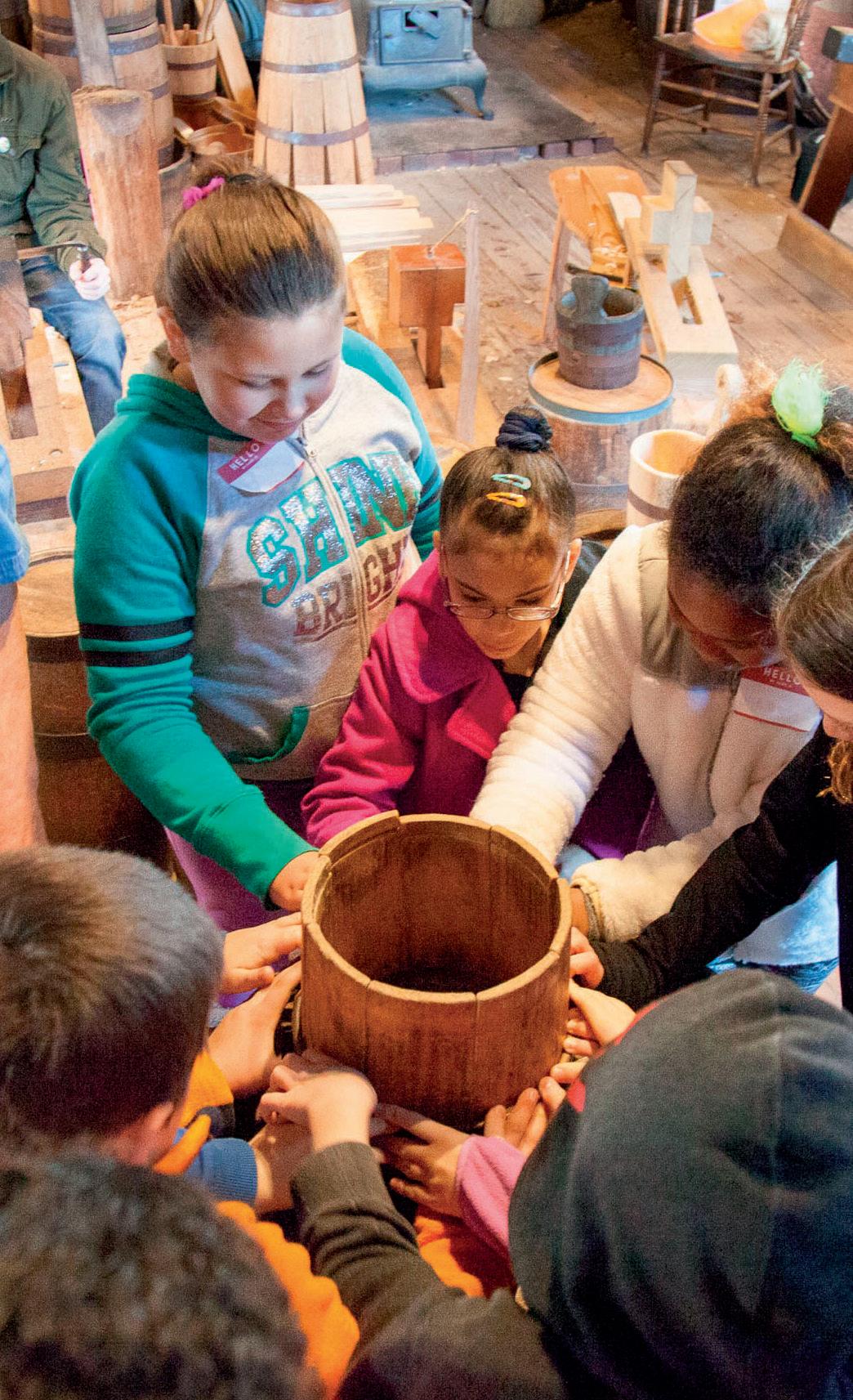
Connecticut Museum of Culture and History
One Elizabeth St. Hartford, CT 06105
